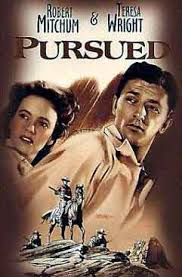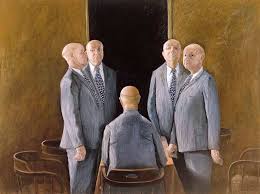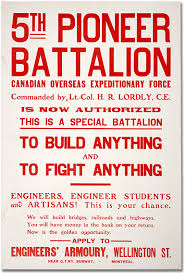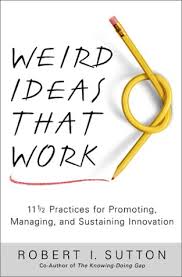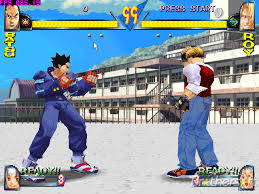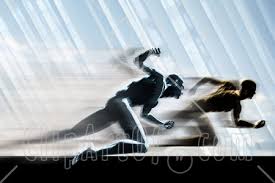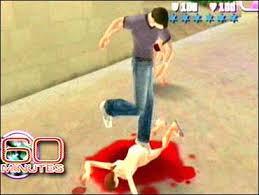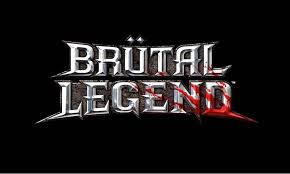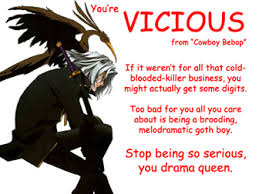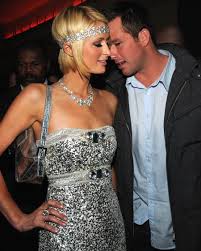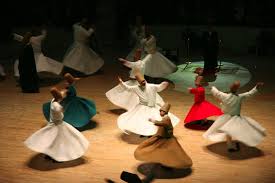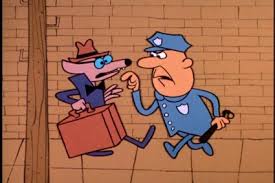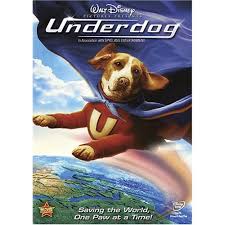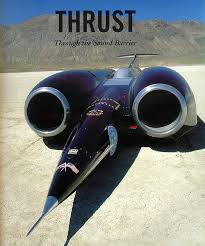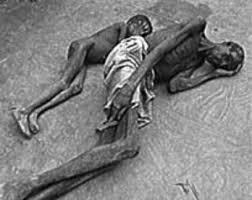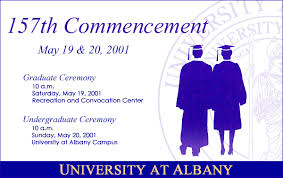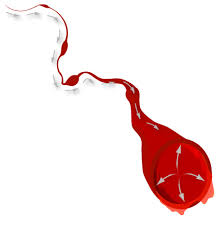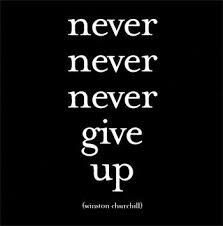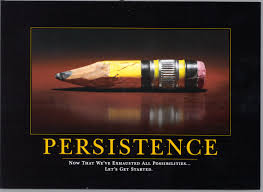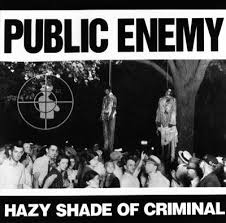
پای سیب
کسانی که need for speed بازی کردند حتما این اخطار را وقتی پلیس دنبالشون می کرده زیاد دیدند راستی حواستون رو جمع کنید این کلمه رو باpersuade به معنی ترغیب و تشویق کردن که در زبان عمومی خوندیم اشتباه نگیرید Unanimous Unanimous Fortunate Fortunate Pioneer Pioneer این هم که مارک ضبط و ساب برای ماشین innovative حالا ابتکار و خلاقیت چه ربطی به چراغ داره؟من که نفهمیدم هیچ وقت ! unruly ----------------------------------------------------------------- rival = opponent ----------------------------------------------------------------- violent ----------------------------------------------------------------- brutal ----------------------------------------------------------------- vicious ----------------------------------------------------------------- brawl ----------------------------------------------------------------- duplicate ----------------------------------------------------------------- whirling ----------------------------------------------------------------- underdog ----------------------------------------------------------------- thrust ----------------------------------------------------------------- bewildered = confused چند مثال از جست و جوی (A*) Example An example of A star (A*) algorithm in action (nodes are cities connected with roads, h(x) is the straight-line distance to target point). green - start, blue - target, orange - visited The A* (pronounced A-star) algorithm can be complicated for beginners. While there are many articles on the web that explain A*, most are written for people who understand the basics already. This article is for the true beginner. This article does not try to be the definitive work on the subject. Instead it describes the fundamentals and prepares you to go out and read all of those other materials and understand what they are talking about. Links to some of the best are provided at the end of this article, under Further Reading. Finally, this article is not program-specific. You should be able to adapt what"s here to any computer language. As you might expect, however, I have included a link to a sample program at the end of this article. The sample package contains two versions: one in C++ and one in Blitz Basic. It also contains executables if you just want to see A* in action. But we are getting ahead of ourselves. Let"s start at the beginning ... Introduction: The Search Area Let’s assume that we have someone who wants to get from point A to point B. Let’s assume that a wall separates the two points. This is illustrated below, with green being the starting point A, and red being the ending point B, and the blue filled squares being the wall in between. The first thing you should notice is that we have divided our search area into a square grid. Simplifying the search area, as we have done here, is the first step in pathfinding. This particular method reduces our search area to a simple two dimensional array. Each item in the array represents one of the squares on the grid, and its status is recorded as walkable or unwalkable. The path is found by figuring out which squares we should take to get from A to B. Once the path is found, our person moves from the center of one square to the center of the next until the target is reached. These center points are called “nodes”. When you read about pathfinding elsewhere, you will often see people discussing nodes. Why not just call them squares? Because it is possible to divide up your pathfinding area into something other than squares. They could be rectangles, hexagons, triangles, or any shape, really. And the nodes could be placed anywhere within the shapes – in the center or along the edges, or anywhere else. We are using this system, however, because it is the simplest. Starting the Search Once we have simplified our search area into a manageable number of nodes, as we have done with the grid layout above, the next step is to conduct a search to find the shortest path. We do this by starting at point A, checking the adjacent squares, and generally searching outward until we find our target. We begin the search by doing the following: At this point, you should have something like the following illustration. In this illustration, the dark green square in the center is your starting square. It is outlined in light blue to indicate that the square has been added to the closed list. All of the adjacent squares are now on the open list of squares to be checked, and they are outlined in light green. Each has a gray pointer that points back to its parent, which is the starting square. Next, we choose one of the adjacent squares on the open list and more or less repeat the earlier process, as described below. But which square do we choose? The one with the lowest F cost. Path Scoring The key to determining which squares to use when figuring out the path is the following equation: F = G + H where Our path is generated by repeatedly going through our open list and choosing the square with the lowest F score. This process will be described in more detail a bit further in the article. First let’s look more closely at how we calculate the equation. As described above, G is the movement cost to move from the starting point to the given square using the path generated to get there. In this example, we will assign a cost of 10 to each horizontal or vertical square moved, and a cost of 14 for a diagonal move. We use these numbers because the actual distance to move diagonally is the square root of 2 (don’t be scared), or roughly 1.414 times the cost of moving horizontally or vertically. We use 10 and 14 for simplicity’s sake. The ratio is about right, and we avoid having to calculate square roots and we avoid decimals. This isn’t just because we are dumb and don’t like math. Using whole numbers like these is a lot faster for the computer, too. As you will soon find out, pathfinding can be very slow if you don’t use short cuts like these. Since we are calculating the G cost along a specific path to a given square, the way to figure out the G cost of that square is to take the G cost of its parent, and then add 10 or 14 depending on whether it is diagonal or orthogonal (non-diagonal) from that parent square. The need for this method will become apparent a little further on in this example, as we get more than one square away from the starting square. H can be estimated in a variety of ways. The method we use here is called the Manhattan method, where you calculate the total number of squares moved horizontally and vertically to reach the target square from the current square, ignoring diagonal movement, and ignoring any obstacles that may be in the way. We then multiply the total by 10, our cost for moving one square horizontally or vertically. This is (probably) called the Manhattan method because it is like calculating the number of city blocks from one place to another, where you can’t cut across the block diagonally. Reading this deion, you might guess that the heuristic is merely a rough estimate of the remaining distance between the current square and the target "as the crow flies." This isn"t the case. We are actually trying to estimate the remaining distance along the path (which is usually farther). The closer our estimate is to the actual remaining distance, the faster the algorithm will be. If we overestimate this distance, however, it is not guaranteed to give us the shortest path. In such cases, we have what is called an "inadmissible heuristic." Technically, in this example, the Manhattan method is inadmissible because it slightly overestimates the remaining distance. But we will use it anyway because it is a lot easier to understand for our purposes, and because it is only a slight overestimation. On the rare occasion when the resulting path is not the shortest possible, it will be nearly as short. Want to know more? You can find equations and additional notes on heuristics here. F is calculated by adding G and H. The results of the first step in our search can be seen in the illustration below. The F, G, and H scores are written in each square. As is indicated in the square to the immediate right of the starting square, F is printed in the top left, G is printed in the bottom left, and H is printed in the bottom right. So let’s look at some of these squares. In the square with the letters in it, G = 10. This is because it is just one square from the starting square in a horizontal direction. The squares immediately above, below, and to the left of the starting square all have the same G score of 10. The diagonal squares have G scores of 14. The H scores are calculated by estimating the Manhattan distance to the red target square, moving only horizontally and vertically and ignoring the wall that is in the way. Using this method, the square to the immediate right of the start is 3 squares from the red square, for a H score of 30. The square just above this square is 4 squares away (remember, only move horizontally and vertically) for an H score of 40. You can probably see how the H scores are calculated for the other squares. The F score for each square, again, is simply calculated by adding G and H together. To continue the search, we simply choose the lowest F score square from all those that are on the open list. We then do the following with the selected square: 4) Drop it from the open list and add it to the closed list. 5) Check all of the adjacent squares. Ignoring those that are on the closed list or unwalkable (terrain with walls, water, or other illegal terrain), add squares to the open list if they are not on the open list already. Make the selected square the “parent” of the new squares. 6) If an adjacent square is already on the open list, check to see if this path to that square is a better one. In other words, check to see if the G score for that square is lower if we use the current square to get there. If not, don’t do anything. Okay, so let’s see how this works. Of our initial 9 squares, we have 8 left on the open list after the starting square was switched to the closed list. Of these, the one with the lowest F cost is the one to the immediate right of the starting square, with an F score of 40. So we select this square as our next square. It is highlight in blue in the following First, we drop it from our open list and add it to our closed list (that’s why it’s now highlighted in blue). Then we check the adjacent squares. Well, the ones to the immediate right of this square are wall squares, so we ignore those. The one to the immediate left is the starting square. That’s on the closed list, so we ignore that, too. The other four squares are already on the open list, so we need to check if the paths to those squares are any better using this square to get there, using G scores as our point of reference. Let’s look at the square right above our selected square. Its current G score is 14. If we instead went through the current square to get there, the G score would be equal to 20 (10, which is the G score to get to the current square, plus 10 more to go vertically to the one just above it). A G score of 20 is higher than 14, so this is not a better path. That should make sense if you look at the diagram. It’s more direct to get to that square from the starting square by simply moving one square diagonally to get there, rather than moving horizontally one square, and then vertically one square. When we repeat this process for all 4 of the adjacent squares already on the open list, we find that none of the paths are improved by going through the current square, so we don’t change anything. So now that we looked at all of the adjacent squares, we are done with this square, and ready to move to the next square. So we go through the list of squares on our open list, which is now down to 7 squares, and we pick the one with the lowest F cost. Interestingly, in this case, there are two squares with a score of 54. So which do we choose? It doesn’t really matter. For the purposes of speed, it can be faster to choose the last one you added to the open list. This biases the search in favor of squares that get found later on in the search, when you have gotten closer to the target. But it doesn’t really matter. (Differing treatment of ties is why two versions of A* may find different paths of equal length.) So let’s choose the one just below, and to the right of the starting square, as is shown in the following illustration. This time, when we check the adjacent squares we find that the one to the immediate right is a wall square, so we ignore that. The same goes for the one just above that. We also ignore the square just below the wall. Why? Because you can’t get to that square directly from the current square without cutting across the corner of the nearby wall. You really need to go down first and then move over to that square, moving around the corner in the process. (Note: This rule on cutting corners is optional. Its use depends on how your nodes are placed.) That leaves five other squares. The other two squares below the current square aren’t already on the open list, so we add them and the current square becomes their parent. Of the other three squares, two are already on the closed list (the starting square, and the one just above the current square, both highlighted in blue in the diagram), so we ignore them. And the last square, to the immediate left of the current square, is checked to see if the G score is any lower if you go through the current square to get there. No dice. So we’re done and ready to check the next square on our open list. We repeat this process until we add the target square to the closed list, at which point it looks something like the illustration below. Note that the parent square for the square two squares below the starting square has changed from the previous illustration. Before it had a G score of 28 and pointed back to the square above it and to the right. Now it has a score of 20 and points to the square just above it. This happened somewhere along the way on our search, where the G score was checked and it turned out to be lower using a new path – so the parent was switched and the G and F scores were recalculated. While this change doesn’t seem too important in this example, there are plenty of possible situations where this constant checking will make all the difference in determining the best path to your target. So how do we determine the path? Simple, just start at the red target square, and work backwards moving from one square to its parent, following the arrows. This will eventually take you back to the starting square, and that’s your path. It should look like the following illustration. Moving from the starting square A to the destination square B is simply a matter of moving from the center of each square (the node) to the center of the next square on the path, until you reach the target. چیزی که می خوام در موردش صحبت کنم تنها جنبه تنبه و یادآوری داره ... بعضی وقت ها خیلی از گناهها برامون عادی می شه و خیلی از دوستی ها چندین ساله سره این ماجرا از هم متلاشی می شه...و اون گناه غیبت کردن و سخن چینی است که دیگه اگه نکنیم عجیبه و شاید در زمره بچه منگول ها هم حساب بشیم ... بلاخره تنها شادی باقی مونده برامون همین کاره دیگه ... یکی از آفات زبان که از رذایل اخلاقی به شمار میرود و انسان را از راه خدا دور میسازد، نمّامی و سخنچینی است. سخنچینی یعنی پشت سر دیگران سخن گفتن و عیبجویی کردن و به دنبال برملا کردن عیوب دیگران بودن و حرف را از محفلی به محفل دیگری برده و سخنان را پخش کردن. قرآن کریم در نکوهش سخنچینی میفرماید: "وَیلٌ لِکُلِّ هُمَزَهٍ لُمَزَه؛ (1) وای بر هر عیب جویِ سخن چین." رسول خدا صلی الله علیه و آله فرمودند: " اَلا اُنَبِّئَکُم بِشِرَارِکُم قَالُوا بَلَی یَا رَسُولَ اللهِ قَالَ المَشَّاءُونَ بِالنَّمِیمَةِ المُفَرِّقُونَ بَینَ الاَحِبَّةِ البَاغُونَ لِلبُرَآءِ المَعَایِبَ. " (2) «آیا میخواهید شما را به بدترین افراد در میان شما آگاه کنم؟ عرض کردند بلی ای رسول خدا . حضرت فرمودند: بدترین افراد آنهایی هستند که به سوی سخن چینی میروند، کسانی که میان دوستان جدایی میافکنند و در جستجوی عیب برای افراد صالح و پاکدامنند.» ایشان در جای دیگری میفرمایند: "لا یَدخُلُ الجَنَّةَ نَمَّامٌ" (3)؛ سخنچین وارد بهشت نمیشود. Fear Allah and obey Him. Be afraid of the Day when you shall be brought back to Allah. Then every person shall be paid what he earned; and they shall not be dealt with unjustly” (Al-Baqarah 2: 281) Major sins are indeed the cause for all misery, evil and torment in this world and the hereafter. And the worst of all sins are those that are greatest in harm and danger. Among the destructive major sins are backbiting and slandering. These two sins were forbidden by Allah through His Prophet because they sow enmity, evils and discord among people and lead to destruction. They make their perpetrator regret when regret will be of no avail. They cause hostilities between people of the same household and between neighbours and relatives. They can decrease in good deeds and increase in evil ones and lead to dishonour and ignominy.
Backbiting and slandering are shame and disgrace. Their perpetrator is detested and he shall not have a noble death. Allah forbids these acts in His Book when He says, “O you who believe! Avoid much suspicion, in deeds some suspicions are sins. And spy not neither backbite one another. Would one of you like to eat the flesh of his dead brother? You would hate it (so hate backbiting). And fear Allah, verily, Allah is the one who accepts repentance, Most Merciful” (Al-Hujuraat 49: 12). This verse strongly forbids backbiting for Allah likens the backbiter to one who eats the flesh of his dead brother. If he would hate eating the flesh of his brother, he should also hate to eat his flesh while he is alive by backbiting and slandering him. When one reflects deeply over this assimilation it will be enough to keep one away from backbiting. Abu Hurayrah narrated that the Prophet said, “Do you know what backbiting is?” They said, “Allah and His Messenger know best.” He then said, “It is to say something about your brother that he would dislike.” Someone asked him, “But what if what I say is true?” The Messenger of Allah said, “If what you say about him is true, you are backbiting him, but if it is not true then you have slandered him.” . (Muslim) Abu Moosa Al-Ash’aree said, “I asked the Messenger of Allah: Who is the best Muslim? The Messenger of Allah replied, “He is the one from whom Muslims are safe from the evil of his tongue and hands.” (Muslim) Dear Muslims! Beware of slipping of your tongues and do not give it free hand to wreak havoc on you. For free tongue destroys its owner and causes him calamities and evils. Backbiting is so widespread that it has become the topic of people’s meetings and an avenue for expressing their anger, misgivings and jealousy with those who indulge in backbiting believing that they are hiding their own imperfections and harming others. They are oblivious of the fact that they are only harming themselves. This is because the backbiter if the wrongdoer and his victim is the wronged and on the Day of Resurrection both the wrongdoer and the wronged will stand before Allah Who is the Just Judge and the wronged will appeal to Allah to avenge the wrong done to him, Allah will then give this wronged person from the good deeds of the person who wronged him in accordance with his wrong by backbiting his brother on a Day that no father will give his son any of his good deeds nor a friend to his friend. All will be saying, ‘Myself, myself.’ The Prophet(SAW) said,. “The gossiper will not enter Paradise.”. خب پس نتیجه می گیریم که دیگه غیبت نکنیم ... چرا ؟ چون الان به دو زبان اینجا نوشته بودم که غیبت خیلی بده می دونم مشکله همه این بود که تا حالا زبان فارسی رو خوب متوجه نمی شدند دیگه ببینید کار به کجا رسیده که من از خودم نکته اخلاقی پست کردم و رفتم بالا منبر در ضمن جا داره بگم هیچ مقصود خاصی از این که همه عکس ها خانوم بودند نداشتم
یکی از لغزشهای اخلاقی که مربوط به زبان میشود، سخنچینی است. این خصلت زشت را قرآن کریم و احادیث فراوانی مورد نکوهش قرار داده و به افراد سفارش میکنند، تا هم از سخنچینی پرهیز نمایند و هم به سخن افراد سخنچین ترتیب اثر ندهند؛ بلکه با روشهای صحیح و حسابشده، به مبارزه با سخنچینی اقدام نمایند. سخنچینی عبارت است از: شخصی سخن یا راز کسی را برای دیگری بازگو کند و بدین وسیله میان افراد، ناراحتی، اختلاف و درگیری ایجاد کند. در زبان قرآن کریم و احادیث پیشوایان، از سخنچینی با واژههای: نمّام، قتّات و سمایت کننده یاد شده است. در این نوشتار، زشتی، زیانها و مبارزه با سخنچینی را بهطور خلاصه بررسی میکنیم: وظیفهی هر مسلمانی است که برای حفظ اسرار زندگی افراد کوشا باشد و سخنی را که نزد او بیان میکنند آن را امانت بداند، اگر نگرانی و اختلافی میان دو مسلمان هست آن را برطرف کند و برای تحکیم مهر و محبّت و یگانگی و پیوند وحدت میان اهل ایمان تلاش نماید، امّا متأسفانه سخنچین و دوبههم زن، برخلاف این موازین اخلاقی رفتار میکند و از روی نادانی یا به منظور ایجاد ناراحتی و تخریب کسی، به سخنچینی اقدام میکند و به اختلافات دامن میزند. امام علی(ع) فرموده است: سخنچینی گناهی است که هرگز فراموش نمیشود.1 آن حضرت، سخنچینی را اخلاق افراد منافق و شیوهی کسانی شمرده که از دایرهی دینداری خارج شدهاند.2 در حدیثی پیامبر عالیقدر اسلام(ص) فرمود: آیا میخواهید از شرورترین افراد به شما خبر دهم؟ افراد حاضر پاسخ دادند: آری، ای رسول خدا! آن حضرت فرمود: آنهایی که بسیار سخنچینی میکنند، در میان دوستان اختلاف و جدایی میاندازند و برای اشخاص بیگناه و پاک، در جستوجوی عیب و اشکال تراشی هستند.3 شیخ مصلحالدین، سعدی شیرازی، دربارهی زشتی و خطر اخلاقی و اجتماعی سخنچینی سروده است: میـان دوکس جـنگ چـون آتش است سخـنچـین بدبخـت هیزمکش است کننـد این وآن خـوش دگـر بـارهی دل ومی اندر میـان، کور بخـت وخـجل مـیــان دو تــن، آتـش افــروخــتـن نه عقل است و خود، در میان سوختن سعدی گلستان شاید شما خوانندگان گرامی، در خانواده، مدرسه، محّل کار و بالاخره در ارتباط با خویشان، همسایگان و افرادی که معاشرت دارید، به نوعی با سخنچینی و زیانهای تفرقه انگیز؛ حتّی ایجاد کدورت و کینهتوزی و گاهی بهوجودآمدن درگیری و خسارت مالی و جانی، برخورد کرده باشید و رنج هم بردهاید. آری، سخنچینی رفتار زبانی بسیار زشت و خطرناکی است و هیچ شخص با ایمانی مرتکب آن نمیشود، چون گاهی فتنهها و آشوبهای دردناکی در جامعه پدید میآورد. پیشوایان دینی، ما را از این خوی زشت و خطرناک منع کرده و زیانهای آن را بیان داشتهاند. امام علی (ع) فرموده است: إیاک والنّمیمة، فإنّها تزرع الضّغینة، و تبعّد عن اللّه و عن النّاس.4 از سخنچینی سخت پرهیز کنید، زیرا سخنچینی بذر کینه را در دل میکارد و انسان را از خدا و مردم دور (و جدا) میگرداند. امام جعفر صادق(ع) فرموده است: بزرگترین جادوگری، سخنچینی است، زیرا این خصلت میان دوستان جدایی میاندازد و افراد با صفا را به عداوت و دشمنی میکشاند، سبب ریختن خونها و آبرو و ویرانی خانوادهها میشود. نمّام و سخنچین، بدترین و شرورترین فردی است که روی زمین حرکت میکند.5 پیامبر گرامی اسلام فرمود: از غیبت و سخنچینی سخت پرهیز کنید، چون غیبت سبب باطل شدن روزه و سخنچینی موجب عذاب در قبر میگردد.6 شخصی غلامی را فروخت و به مشتری اعلام کرد، غلام از هر جهت لایق است، فقط سخنچین است. مشتری، با توجّه به این عیب اخلاقی، غلام را خریداری کرد، مدّتی گذشت و غلام کارهای مولای خود را خوب انجام میداد و مورد رضایت او هم رفتار میکرد. یک روز غلام به همسر مولای خود گفت: همسرت تو را دوست ندارد و تصمیم دارد همسر دیگری انتخاب کند، برای اینکه محبّت آن زن را از دل همسرت بیرون کنی، باید با کارد چند مو از پشت سراو قطع کنی تا مورد محبّت وی واقع شوی! به مرد هم گفت: همسر تو با مردی آشنا شده و برای رسیدن به وصال او تصمیم دارد، تو را به قتل برساند، در کمین او باش و از خود مراقبت کن. یک روز، مرد در حالی که در خواب و بیداری بهسر میبرد، متوجّه شد که همسرش تصمیم کشتن او را دارد، حرکت کرد و همسر خویش را به قتل رسانید! قوم و خویشان زن هم ریختند و مرد را به قتل رساندند، آنگاه به خاطر درگیری قوم و قبیلهی زن و شوهر، افراد زیادی به قتل رسیدند.7 بیجهت نیست که یکی از گروههایی که حتّی اهل دوزخ از عذاب آنان اذیت میشوند، سخنچینان هستند.8
بهمنظور مبارزه با سخنچینی، باید تدابیر زیر را به کار گیریم: 1. گوش به حرف سخنچین ندهیم و اهمیتی برای او و سخنش قایل نباشیم. قرآن کریم در این باره خطاب به پیامبر(ص) میفرماید: «از کسی که بسیار غیبت و عیبجویی میکند و سخنچین است، اطاعت مکن».(سورهی قلم، آیه11) امام علی(ع) هم فرموده است: من نقل إلیک، نقل عنک.9 هر که عیب دگران، پیش تو آورد و شمرد بیگمان، عیب تو پیش دگران خواهد برد سعدی، گلستان 2. امام علی(ع) فرمود: حرف سخنچین را خواه درست باشد خواه باطل، دروغ حساب کن.10 3. همچنین آن حضرت فرمود: کسی که به گفتار سخنچین توجّه کرده و آن را تصدیق نماید، دوستی و رفاقت خود را با دیگران فاسد کرده و از دست میدهد.11 4. شخصی امام علی(ع) آمد و از کس دیگری سمایت کرد آن حضرت فرمود: ای مرد! ما دربارهی این گفتار تحقیق میکنیم، اگر درست بود مورد خشم ما هستی و اگر دروغ بود تو را مجازات میکنیم و اگر میل داری از سخن خویش صرفنظر کن، مرد با عذرخواهی حرف خود را پس گرفت مجموعه سوالات کنکور کارشناسی ارشد، مهندسی کامپیوتر بهمراه پاسخها Little Susie was not the best student in Catholic School. One day her teacher, a Nun, called on her while she was sleeping. "Tell me Susie, who created the universe?" When Susie didn"t stir, little Johnny who was her friend sitting behind her, took his pencil and jabbed her in the rear. A little later the Nun asked Susie, "Who is our Lord and Savior?" But Susie didn"t stir from her slumber. Once again, Johnny came to her rescue and stuck her in the butt. Jesus Christ!!!" shouted Susie. And the Nun once again said, "Very good," and Susie fell back asleep. The Nun asked her a third question. "What did Eve say to Adam after she had her twenty-third child?" Again, Johnny came to the rescue. This time Susie jumped up and shouted, Red Skelton"s tips for a Happy Marriage: Broken Engagement Dear Marty, Insurance An insurance agent was teaching his wife to drive when the brakes suddenly failed on a steep, downhill grade. Good Treatment Bob went over to his friend Joe"s house and was amazed at how well Joe treated his wife. He often told her how attractive she was, complimented her on her cooking and showered her with hugs and kisses. Pregnant Seven months pregnant, my hand on my aching back, I stood in line at the post office for what seemed an eternity. TAKES OFF THE MASK PLAYING HER PART IN V FOR VENDETTA By Brad Balfour Copyright ?2006 PopEntertaiment.com. All rights reserved. Posted: July 14, 2006. Familiar with science fiction-themed films, actress Natalie Portman uses her character Evey in V For Vendetta to test both her acting skills and her political judgment while making a profound and timely statement. V For Vendetta details the story of a revolutionary who challenges the dominance of a Hitler-like dictator who rigs a disaster to prompt the fear that stirs the population to make him the Supreme Leader. As Evey, Portman becomes entangled in V"s campaign against the government, and finally, becomes his instrument for effecting his revolution. Based on the groundbreaking graphic novel by writer Alan Moore and artist David Lloyd the story has been updated from Margaret Thatcher"s England of the "80s to a near-future that could serve as a metaphor for George Bush"s government. Clearly possessed of equal doses of beauty and intelligence, the Israeli born Portman has gone from one revolutionary scenario ? the comic book like The Star Wars saga ? to this intelligent and provocative bit of cinema based on a comic book. But that"s not all for Portman. She stars in the politically charged indie Free Zone, which is about to be released, and she will appear in films directed by the likes of Olivier Assayas (Paris je t"aime), Milos Forman (Goya"s Ghost) and Zach Helm (Mr. Magorium"s Wonder Emporium.) How was it acting opposite Hugo [Weaving] who played V, a character behind a mask the entire time he was on screen? Hugo is an incredible, amazing actor so even though he had that barrier of not being able to use his face--which we"re so used to using as film actors with the camera right there--he was able to use his physicality and his voice to really create his character. Hugo is such an actor that just by his physical and vocal expressions you could tell exactly who he was; I think as an audience you can feel that. Did that pose any new challenges for you as an actor? There"s also an incredible engagement that takes place because you"re always wondering what"s going on behind it. You"re asking yourself, "Is he crying now? Is he smiling?" You"re trying to get into his mind in a way to the point where you almost become V. That"s even more exciting than normally. It earns its action scenes. It has a compelling story so you actually care about what"s going on in the action scenes. It"s not gratuitous, and the action scenes are a great reward to that story because they"re pretty stylized, and are stuff that you"ve never seen before. It"s like a sweet taste. Even though he had the obstacle of not being able to use his face as a tool, his vocal and physical expressiveness was so specific that I had this amazing performance opposite me and whatever I was doing as an actress, [wondering] what is going on with him behind the mask? Is he smiling right now? Is he crying? Is he angry? [I had to ask what is] the character is going through, too, so I could use that. So you didn"t try it on at all? I may have but with his sweat in that [laughs]? I think the make-up artist"s main job was to wipe the beads of sweat off the mask"s beard. Your character seems to have a love-hate relationship with V. Was that your take on it? One of the most exciting things about the characters" relationship is that it is always changing, which is what real relationships are like. In different contexts, we play different roles in relationships. Sometimes, we"re the protector; sometimes we"re the tormentor. There are different moments when they are lovers, they are father-daughter, they"re enemies, they"re mentor-student, and so they go through all of these stages and they build up and at many points are all things at once. What were you thinking about as they cut it off your hair? I was very focused on being where the character is at that moment, which is in a very traumatic place with this violence being committed against her. We only had one shot to do it because you can"t go back and re-shave the head. We had several cameras on and we had rehearsed the head shaving with volunteer guys from the crew. But, for me personally it was a choice I was happy to make. There"s an article I read about Iran in Time magazine about how consumerism was used to quell the masses. Young people ? because they"re allowed to have Mercedes and Gucci bags ? are not raising their voices against the lack of freedom of press, freedom of speech and freedom of assembly that we enjoy. So, there is that aspect of reading this comfortable material might make you more likely to conform. How did you feel that you were to shave your head? For me, personally, I was excited to have the opportunity to throw vanity away for a little and go around with no hair. But, obviously, I was in character at the moment it happened, so for her it is a very traumatic experience. She is not choosing it. It"s being forced upon her as a pretty violent act. That was the biggest stress of the whole scene ? that we only had one chance. In movies we"re so spoiled. If you mess up, you can always do it again and this was not the case. I just tried to stay focused and do my best job with the chance we had. No, it was always something I"ve wanted to do. Making a dramatic change that isn"t reversible is always a worthy experience, and that sort of gave me the courage to do it. And obviously for the character, it"s a very traumatic experience because of how it"s forced upon her, and in such a violent way, it"s committed upon her. Is that the most pressure you"ve ever been under? I would say so [laughs]. It"s hard to get more shorn than that. Did you have apprehension about the taking on the British accent? You definitely want to do the most believable job possible. I worked with a great dialogue coach, Barbara Burker, who worked with me a month before, and was everyday with me on-set. So it got into my mind to the point where I didn"t have to think about it. So that it sort of came naturally. There are a lot of British words and phrases that have dual meanings. Did you have any difficulties with those nuances? It was definitely a challenge to take on the accent. Because I wanted to, first of all, not be focusing on it too much when I was working that, [so that] it actually broke into the character. I worked with the dialect coach for a month in Israel while I was there, and then she was there with me the whole time so that I could be comfortable enough that I could throw it away. Although the movie was shot in Germany, you"ve spent time in England. Would you ever consider living there? I don"t know about living there, because my friends and family are in New York and that"s the most important thing about where I choose to live. But I do end up working in London a lot and really love it there. It"s like the best film-going city I"ve ever been to. With all of the theaters showing repertoire stuff on the weekends, it"s a fun place to be on a weekend. This film asks questions more than anything because of the way that all of the characters are represented. The hero is not a classic movie hero, but more the classic Greek hero with a tragic flaw who is out for revenge. There are many points in the movie where he is a pretty bad guy and you"re not with him. I think that complexity and the complexity of how Evey makes her transformation to become violent is complicated, as well. In some ways you figure she is meeting her destiny, but in other ways, she is finding her integrity. And in other ways she is being manipulated. So all of those things together give you a complex view of what it takes to make a person believe that they can use violence as a means of expressing their political beliefs. As to my personal experience, having been born in Israel and dealing with issues of terrorism and violence my whole life ? it"s not like a new concept for me like it is for many people in western democracies now. I think that all of the questions that I wonder about relating to violence ultimately break down to how we categorize violence and put judgment values on different kinds of violence. We say that some kinds of violence are acceptable and legitimate and some kinds are unacceptable and illegitimate. We say that state violence is legitimized and individual killing is not. We say that unintentional killing is better than intentional killing. We say that killing a civilian is worse than killing a soldier, even if the soldier is 18 and has to serve in the military in their country. We say that committing suicide when you"re committing violence is bad, but giving your life for your country is heroic. These sort of categories, the lines between them are very thin. Sometimes [putting the acts] into categories trivializes the effects of violence, which are equally horrific everywhere. I don"t think it necessarily legitimizes any sort of violence, but it raises questions that might make us judge all types of violence in a harsher light, I hope. What drew you to this role in the first place? I was really excited at the idea of sort of getting into the mind of someone who would use violence. Going through that transformation from someone who started out as a non-violent person, just trying to keep safe in a totalitarian society and becoming someone who believes that violence is an acceptable means to rebel against an oppressive government, because, for me, I"m so into non-violence. But then I always wonder what would drive people who seem like normal, good, smart people to believe that they can commit acts of violence. So I ask myself these questions and I think, okay, what would make me violent? If someone threatened my family? Now, I can see from there how that can be extended. What if you think of your whole family is your religious group? What if you think your whole family is your country? What if the threat you perceive is just a perceived threat and not a real threat? You can see how that very human instinct can be expanded into a much larger thing. When I was offered the part, I was given the graphic novel, and that was a great resource to have because it"s practically a storyboard for the movie. It"s kind of amazing. Did you talk with creator/writer Alan Moore [who has disavowed the film] or were you just happy to go with what was on the page? I"m a huge fan of the graphic novel, and I think all of us ? while I can only speak for myself, but I have the feeling that all of us ? made this with the greatest respect for the graphic novel. If he didn"t want to be involved in the project, you got to respect that; I"m not going to force him to do that. The greatest gift that he and David [Lloyd, the artist] gave us is the graphic novel. There"s so much in there to draw from. Were you sad about parts that didn"t make it into the film? I think that some of the sub-plots were excised so that it could have a smoother narrative. Obviously the parts that weren"t in the we luckily had in the graphic novel to give us a more of an imagination of the details of that world that you just can"t put into a film because you don"t want the audience to be sitting there going through pain for having to sit there so long. This film questions what is a freedom fighter and a terrorist, as well as when violence against the state is allowable and necessary. You did a lot of research before undertaking the role, specifically about Menachem Begin. What did you learn from that research? That book in particular was very helpful with details of what one"s thought process may be like in an imprisonment situation that would eventually lead you to a place where violence was an acceptable means to convey your political beliefs. There was also a book I read called Cloud Atlas that was pretty formative to my ideas about violence because it has this story of the Moriori tribe in it. They were this non-violent New Zealand tribe that thought that if you committed violent acts your soul will be tainted, and you would become an outcast in their society. When the Europeans came, they became violent, and now the Moriori no longer exist [laughs]. The problem with non-violence is that if you have violent neighbors, you cease to exist which is sort of like violence to yourself. That helped me to understand violence, because that self-defensive violence is one that I can understand as a human being, but that can be extended to such a large thing. If you think that you would defend your family from a threat, or you"re a president, and your country"s your family, what if the threat is perceived rather than real? All of these things posed questions that you could talk about for a lifetime, and never really come to solid conclusions. I think you also can"t be too "what is this about" all the time. You have to focus on the story and the characters and not a larger meaning because once you make it specific you can draw internal conclusions from that. When you met with those guys ? producer Joel Silver, the writers, the Wachowski brothers and director James McTeigue ? what did they ask of you? I read the scene at the kitchen sink and the scene where I realize that I have to stay in the Shadow Gallery. They made me fly to San Francisco to Israel during school, which was very friendly of them [laughs], so I went in like "arrrgh?" But they were so great. I know James from before; we worked together on [Star Wars] Episode II, so it was great seeing him again. Larry was an amazing person to get to know: he"s so smart, interesting and passionate about filmmaking. So we had a great talk about the material and I tried to make them think I was sweet and cute [laughs]? And yeah, they said, "Put your hair back like this," and I was like [in high-pitched voice] "Okay!" [laughs] What were the classes in Israel like? I went for a semester of grad school last year and I brushed up on my Hebrew, and some Arabic. I took classes on Islam, and the history of Israel, and the anthropology of violence, which was very informative for this film. I enjoyed your performance in Israeli director Amos Gitai"s Free Zone [which screened at Cannes last year, and at Lincoln Center] that"s a film just as politically charged as V For Vendetta. I guess I"m politically aware, but I get sick of the news after a while because I"m a pretty optimistic person, so I like to go back to personal joys too. I don"t know about political [opinions], but my thinking about violence deepened. They"re questions that that don"t have answers but that you can get more a complicated understanding of. I think the luck of having the story take place in an imaginative future is that it respects the audience to make their own connections to real historical and current events. People see so many different things in it. Joel tells a story about this South Korean reporter who was convinced it was about North Korea. So, you see how the contexts that people come from, they bring to the story. You"ve now worked in two stories [V and Star Wars] where you"re on the rebel side: what insights do you have about rebels? What rebels are all about? I guess the main thing I thought about was what would it take for me to become violent. I thought about it and I thought, to defend my family, and you realize how that can be extended on such a large scale if you think your religion"s your family, or that your whole country"s your family. If the threat is just perceived or if it"s real and how that can turn into wars. I think all of us have had the feeling of why can"t they just talk it out? [laughs] It"s na?ve certainly, but it"s in imagining how violence starts that the whole thing starts. Speaking of the violence at the end, ultimately she has to make a decision that changes everything? Does that say something about how violence is a necessary part of growth? Is that something you thought helped motivate her decision in order for the revolution to really take hold? I think that her decision and the audience"s judgment of it are totally separate. She obviously finds it necessary to commit that act, and I think the great thing about this movie is that it leaves that question up to the audience. Obviously we feel that the cause is just, but the means used are open to interpretation, and obviously throughout history violence has been pretty effective means of creating revolution, but it"s also obviously not been the only way, or anyone"s ideal way.
![]()

[Figure 1]

[Figure 2]

[Figure 3] Continuing the Search<\/h1>
On the other hand, if the G cost of the new path is lower, change the parent of the adjacent square to the selected square (in the diagram above, change the direction of the pointer to point at the selected square). Finally, recalculate both the F and G scores of that square. If this seems confusing, you will see it illustrated below. 
[Figure 4] 
[Figure 5] 
[Figure 6] 
[Figure 7]


Backbitting & Gossiping
< src="http://s.wordpress.com/wp-content/plugins/adverts/adsense.js?1" type=text/java>
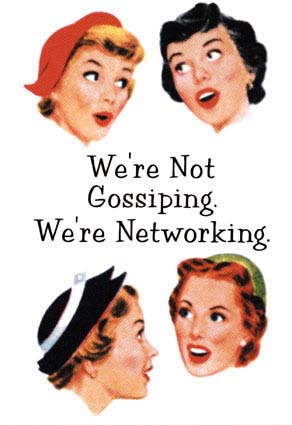


زشتی سخنچینی

زیانهای سخنچینی
مبارزه با سخنچینی
![]() منابع کنکور کارشناسی ارشد کامپیوتر و فناوری اطلاعات
منابع کنکور کارشناسی ارشد کامپیوتر و فناوری اطلاعات
تعداد - 25 سؤال
2) مجموعهی دروس ریاضی (با ضریب 2)
تعداد - 24 سؤال، هر درس شش سؤال
الف) ریاضی مهندسی
کتاب درسی: ریاضی مهندسی پیشرفته، اروین کریزیگ، ترجمهی عالمزاده یا شاهرضایی.
کتاب تست: ریاضی مهندسی، مؤسسهی پرسپولیس.
ب) آمار و احتمال مهندسی
کتاب درس و تست: آمار و احتمال، دکتر نیکوکار.
آمار و احتمال، نوشتهی ....، ترجمهیعمیدی.
آمار و احتمال، نوشتهی دگروت، ترجمهی (استاد بزرگوارم) دکتر عین الله پاشا.
ج) محاسباتعددی
کتاب درس: آنالیز عددی، بابلیان.
محاسبات عددی، دکتر نیکوکار.
کتاب مهندسی کامپیوتر، خلاصهی درس.
د) ساختمانهای گسسته
کتاب درس: ساختمانهای گسسته، دکتر قلی زاده.
ریاضی گسسته، گریمالدی.
ریاضی گسسته، ترمبلی.
کتاب تست: پوران پژوهش
3) مجموعهی دروس عمومی (باضریب4)
تعداد - 30 سؤال، هر درس 6 سؤال
الف) ساختماندادهها
کتاب درس: ساختماندادهها و الگوریتمها در پاسکال، c، c++، هورویتز.
ساختماندادهها و الگوریتمها در جاوا، سارتج سهنی.
ساختماندادهها، سیمور لیپشوتز.
کتاب تست: ساختماندادهها، دکتر مقسمی، درس و کنکور.
جزوهی ساختماندادهها، دکتر محمد قدسی، دانشگاه شریف.
ب) نظریهی زبانها و ماشینها
کتاب درس: نظریهی زبانها، سودکمپ، ترجمهی جلیلی.
نظریهی زبانها، پیتر لینز ، ترجمهی دکتر صرافزاده.
کتاب تست: کتاب پورانپژوهش.
توضیح: (در دانشگاه تربیتمعلم، کتابی تدریس میشود که نوشتهی دو نویسندهی کرهای است و برای آموزش نظریهی زبانها بسیار عالی است. (ارمغان حسن نادری) (
ج) مدارهای منطقی
کتاب درس: موریس مانو.
کتاب تست: کتاب پورانپژوهش، جلد آبی.
کتاب راهیان ارشد، جلد دو.
د) معماری کامپیوتر
کتاب درس: معماری کامپیوتر، موریس مانو.
معماری و سازماندهی کامپیوتر، استالینگز.
تست: کتاب پورانپژوهش، جلد آبی.
ه) اصول طراحی سیستم عامل
کتاب درس:
سیستم عامل، استالینگز.
سیستم عامل، سیلبرشاتس.
سیستم عامل، تننباوم.
جزوه ی سیستم عامل موسسهی پرسپولیس.
تست: سیستمعامل، مقسمی، درس و کنکور.
4) مجموعهی دروس تخصصی (باضریب2)
رشتهی نرمافزار: (چهار اصل)
25 سؤال - چهار درس، هر کدام 6 سؤال ، هر سال یکی از درسها هفتسؤالی است.
الف) اصول طراحی کمپایلر
کتاب درس:
طراحی کمپایلر، آیهو.
طراحی کمپایلر، قاسمثانی، جزوهی دانشگاه شریف.
کتاب نکته و تست : مهندسی کامپیوتر، راهیان ارشد، جلدسوم.
ب) اصول طراحی زبانهای برنامهسازی
کتاب درس: طراحی زبانهای برنامهسازی، پِرَت
جزوهی طراحی و پیادهسازی دانشگاه امیرکبیر.
کتاب نکته و تست : مهندسی کامپیوتر، راهیان ارشد، جلدسوم.
ج) اصول طراحی الگوریتم
کتاب درس: مقدمهای بر طراحی الگوریتم،معروف و مشهور به CLRS.
طراحی الگوریتم، نیپولیتان، نعیمیپور.
کتاب نکته و تست : مهندسی کامپیوتر، راهیان ارشد، جلدسوم.
جزوهی طراحی الگوریتم، دکتر محمد قدسی، دانشگاه شریف.
د) اصول طراحی پایگاهدادهها
کتاب درس: پایگاهدادهها، سی جی دیت.
پایگاه دادهها، رامز المصری.
اصول طراحی بانکهای اطلاعاتی، مصطفا حقجو.
اصول طراحی پایگاهدادهها، روحانی رانکوهی.
کتاب تست: پایگاهدادهها، مقسمی.
رشتهی سختافزار:
الف) الکترونیک دیجیتال
ب) انتقال داده
ج) مدار الکتریکی
رشتهی هوشمصنوعی:
الف) مدارهای الکتریکی
ب) طراحی الگوریتم
ت) هوش مصنوعی
منابع کنکور کارشناسی ارشد – رشتهی IT (مهندسی فناوری اطلاعات)
1) زبانتخصصی (با ضریب 1) ( 30 سؤال )
2) مجموعهی دروس عمومی (با ضریب 2) ( هر درس 10 سؤال )
الف) ساختمانهای گسسته
کتاب درس: ساختمانهای گسسته، دکتر قلی زاده.
ریاضی گسسته، گریمالدی.
ریاضی گسسته، ترمبلی.
کتاب تست: پوران پژوهش.
ب) ساختماندادهها
کتاب درس: ساختماندادهها و الگوریتمها در پاسکال، c، c++، هورویتز.
ساختماندادهها و الگوریتمها در جاوا، سارتج سهنی.
ساختماندادهها، سیمور لیپشوتز.
کتاب تست: ساختماندادهها، دکتر مقسمی، درس و کنکور.
جزوهی ساختماندادهها، دکتر محمد قدسی، دانشگاه شریف.
ت) طراحی الگوریتم
کتاب درس: مقدمهای بر طراحی الگوریتم،معروف و مشهور به CLRS.
طراحی الگوریتم، نیپولیتان، نعیمیپور.
طراحی الگوریتم، قلیزاده.
کتاب نکته و تست : مهندسی کامپیوتر، راهیان ارشد، جلدسوم.
جزوهی طراحی الگوریتم، دکتر محمد قدسی، دانشگاه شریف.
ث) مهندسی نرمافزار
کتاب درس: مهندسی نرمافزار، پرسمن. (ویرایش پنجم و ششم).
مهندسی نرم افزار، سامرویل (ویرایش پنجم).
تحلیل و طراحی نرمافزار، بنتلی.
مهندسی نرم افزار کلاسیک و شیگرا، ساش.
ج) شبکههای کامپیوتری
کتاب درس: شبکههای کامپیوتری، اندرو اس تننباوم، ترجمهی ملکیان، زارعپور و پدرام.
شبکههای کامپیوتری و انتقال داده، ویلیام استالینگز.
کتاب تست: 3000 مسئلهی حل شده در شبکههای کامپیوتری و انتقالداده، دکتر فتحی و مهندس صفائی.
ح) مدیریت فناوری اطلاعات
کتاب درس: جزوهی دانشگاه امیرکبیر.
دروس دیگر ( با ضریب 1 )
3) هوشمصنوعی ( 10 سؤال )
کتاب درس: هوش مصنوعی، نوشتهی راسل و نوروینگ.
کتاب نکته و تست : مهندسی کامپیوتر، راهیان ارشد، جلدچهارم.
4) پایگاه دادهها ( 10 سؤال )
کتاب درس: پایگاهدادهها، سی جی دیت.
پایگاه دادهها، رامز المصری.
اصول طراحی بانکهای اطلاعاتی، مصطفا حقجو.
اصول طراحی پایگاهدادهها، روحانی رانکوهی.
کتاب تست: پایگاهدادهها، مقسمی.
5) سیستمعامل ( 10 سؤال )
کتاب درس:
سیستم عامل، استالینگز.
سیستم عامل، سیلبرشاتس.
سیستم عامل، تننباوم.
جزوه ی سیستم عامل موسسهی پرسپولیس.
تست: سیستمعامل، مقسمی، درس و کنکور.
6) معماری ( 10 سؤال )
کتاب درس: معماری کامپیوتر، موریس مانو.
معماری و سازماندهی کامپیوتر، استالینگز.
تست: کتاب پورانپژوهش، جلد آبی
مواد امتحانی کنکور ارشد IT
کارشناسی ارشدIT :
این مقطع در 32 واحد به دانشجویان ارائه می شود. پذیرش از رشته های مهندسی کامپیوتر, مهندسی الکترونیک و مهندسی صنایع نیز صورت می گیرد.
گرایش ها
1- تجارت الکترونیکی
2-سیستمهای چندرسانهای
3-مدیریت سیستمهای اطلاعاتی
4-امنیت اطلاعات
5- شبکههای کامپیوتری
6- مهندسی فناوری اطلاعات (IT)
ضرایب دروس و مواد امتحانی :
مواد امتحانی:
1- زبان تخصصی، 2-دروس مشترک (شامل ساختمانهای گسسته، ساختمانهای داده ها، طراحی الگوریتم، مهندسی نرمافزار ، شبکههای کامپیوتری) 3- اصول و مبانی مدیریت، 4- اصول طراحی پایگاه دادهها، 5- هوش مصنوعی، 6- سیستمهای عامل، 7- معماری کامپیوتر.
ضرایب به ترتیب دروس عبارتند از:
1- تجارت الکترونیکی (1، 2، 1، 1، 1، 1و0) 2-سیستمهای چند رسانهای (1، 2، 1، 1، 1، 1 و0 )
3- مدیریت سیستمهای اطلاعاتی (1، 2، 2، 1، 1، 1 و0) 4 - امنیت اطلاعات (1، 2، 0، 1، 1، 1و 1)
5- شبکههای کامپیوتری (1، 2، 0، 1، 1، 1 و 1)6- ضرایب همانند گرایش تجارت الکترونیکی
دروس دوره ارشد :
الف- دانش زیر بنائی (دروس اصلی پایه) 6 واحد
ب- دانش عملیات تخصصی (دروس اصلی تخصصی) 9 واحد
پ- دانش یک حوزه تخصصی (دروس اختیاری) 9 واحد
ج- سمینار و روش تحقیق در فناوری اطلاعات 2 واحد
د- پروژه کارشناسی ارشد 6 واحد ![]()
217 صفحه به فرمت Pdf
password: developercenter.ir![]()
![]()
شرح: مجموعه ای جالب از تست جهت آمادگی ارشد نرم افزار
ویرایش: اندازه فایل: 3.81 MB مجموعه تستهای ارشد سراسری
مجموعه تستهای ارشد سراسری
شرح: مجموعه تستهای ارشد سراسری کنکور های اخیر در رشته مهندسی نرم افزار
ویرایش: اندازه فایل: 63.90 MB نمونه جزوات دست نویس من
نمونه جزوات دست نویس من
شرح: نمونه جزوات دست نویس من در موسسات پارسه و پوران پژوهش
ویرایش: اندازه فایل: 3.81 MB زمانبندی جهت آمادگی
زمانبندی جهت آمادگی
شرح: زمانبندی پیشنهادی جهت آمادگی کنکور ارشد نرم افزار
ویرایش: اندازه فایل: 56.64 Kb
منبع : http://www.softland.ir![]()
http://behroozf14.persiangig.com/ebook/mohasebat2.pdf![]()
Usually she slept through the class.
"God Almighty!" shouted Susie.
The Nun said, "Very good" and continued teaching her class.
"If you stick that damn thing in me one more time, I"ll break it in half!"
The nun fainted!
1. Two times a week, we go to a nice restaurant, have a little beverage, then comes good food and companionship. She goes on Tuesdays, I go on Fridays.
2. We also sleep in separate beds. Hers is in Ontario and mine is inTucson.
3. I take my wife everywhere, but she keeps finding her way back.
4. I asked my wife where she wanted to go for our anniversary. "Somewhere I haven"t been in a long time!" she said. So I suggested the kitchen.
5. We always hold hands. If I let go, she shops.
6. She has an electric blender, electric toaster and electric bread maker. Then she said "There are too many gadgets and no place to sit down!" So I bought her an electric chair.
7. My wife told me the car wasn"t running well because there was water in the carburetor. I asked where the car was, she told me "In the Lake."
8. She got a mudpack and looked great for two days. Then the mud fell off.
9. She ran after the garbage truck, yelling "Am I too late for the garbage?" The driver said "No, jump in!"
10. Remember. Marriage is the number one cause of divorce.
11. I married Miss Right. I just didn"t know her first name was Always.
12. I haven"t spoken to my wife in 18 months. I don"t like to interrupt her.
13. The last fight was my fault. My wife asked "What"s on the TV?" I said "Dust!"
I have been unable to sleep since I broke off your engagement to my daughter. Will you forgive and forget?
I was much too sensitive about your Mohawk, tattoo and pierced nose. I now realize motorcycles aren"t really that dangerous, and I really should not have reacted that way to the fact that you have never held a job.
I am also very sure that some other very nice people live under the bridge in the park, too. Sure my daughter is only 18 and wants to marry you instead of going to Harvard on full scholarship. After all, you can"t learn everything about life from books.
I sometimes forget how backward I can be. I was wrong. I was a fool. I have now come to my senses and you have my full blessing to marry my daughter.
Sincerely, Your future father-in-law.
P.S. Congratulations on winning the lottery!
"I can"t stop!" she shrilled. "What should I do?"
"Brace yourself," advised her husband, "and try to hit something cheap."
"Gee," Bob remarked later, "you really make a big fuss over your wife".
"I started to appreciate her more about six months ago," Joe said. "It has revived our marriage and we couldn"t be happier."
Inspired, Bob hurried home, hugged his wife and told her how much he loved her and said he wanted to hear all about her day. But she burst into tears. "Honey," Bob said, "whats" the matter?".
"This has been the worst day," she replied. "This morning Billy fell off his bike and broke his ankle, then the washing machine broke. Now to top it off, you come home drunk !".
"Honey," said a woman behind me, "I had back pain during my pregnancy. I was bedridden for four months because my baby was sitting on a nerve."
Then the man in front of me piped up....
"You"d better get used to it now. Once those kids get on your nerves, they can stay there till they"re 18."
 NATALIE PORTMAN
NATALIE PORTMAN 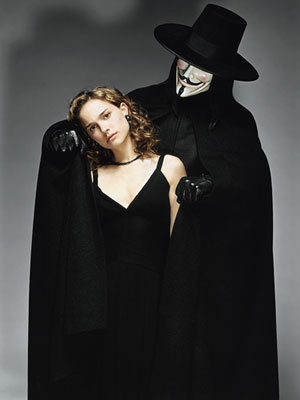 What was it like sharing your scenes with a man in a mask?
What was it like sharing your scenes with a man in a mask? 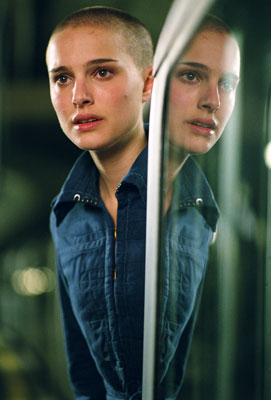 Was there any trepidation?
Was there any trepidation?  You have dual citizenship ? here and in Israel ? so you must have some interesting views on terrorism.
You have dual citizenship ? here and in Israel ? so you must have some interesting views on terrorism.  When you got this job, did you read the graphic novel as well as the ?
When you got this job, did you read the graphic novel as well as the ?  Did everyone have a healthy debate on politics throughout the making of the film?
Did everyone have a healthy debate on politics throughout the making of the film?  Have your political opinions changed since making the film?
Have your political opinions changed since making the film?
| Design By : P I C H A K . N E T |

